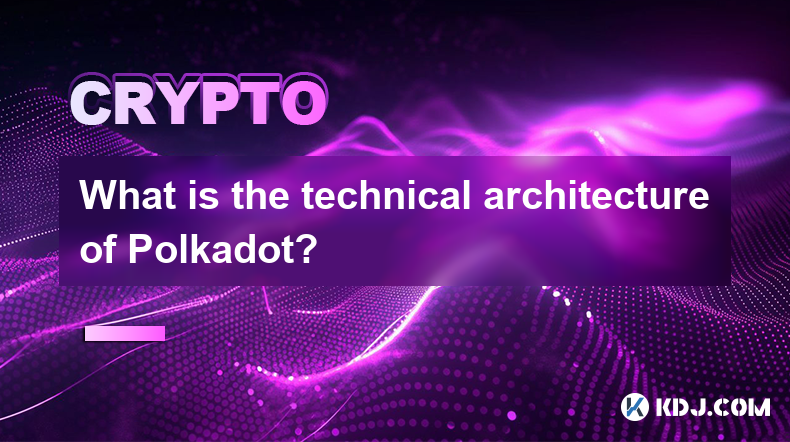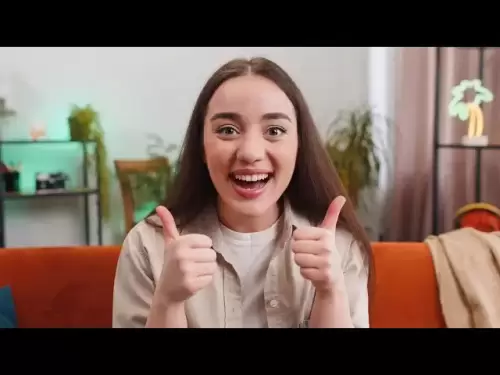-
 Bitcoin
Bitcoin $109,583.2239
0.19% -
 Ethereum
Ethereum $2,583.4612
0.48% -
 Tether USDt
Tether USDt $1.0003
-0.04% -
 XRP
XRP $2.2681
0.70% -
 BNB
BNB $659.9218
-0.52% -
 Solana
Solana $151.4961
-0.37% -
 USDC
USDC $0.9999
-0.02% -
 TRON
TRON $0.2861
1.20% -
 Dogecoin
Dogecoin $0.1718
0.04% -
 Cardano
Cardano $0.5960
-0.07% -
 Hyperliquid
Hyperliquid $40.1233
2.85% -
 Sui
Sui $2.9974
2.48% -
 Bitcoin Cash
Bitcoin Cash $497.1279
-1.76% -
 Chainlink
Chainlink $13.7275
-0.22% -
 UNUS SED LEO
UNUS SED LEO $9.0241
0.70% -
 Avalanche
Avalanche $18.5536
-0.88% -
 Stellar
Stellar $0.2421
1.39% -
 Toncoin
Toncoin $2.8593
-0.51% -
 Shiba Inu
Shiba Inu $0.0...01187
-0.07% -
 Litecoin
Litecoin $90.0023
2.90% -
 Hedera
Hedera $0.1590
2.79% -
 Monero
Monero $322.1495
0.00% -
 Polkadot
Polkadot $3.5453
-1.00% -
 Dai
Dai $1.0000
-0.01% -
 Bitget Token
Bitget Token $4.5733
-1.06% -
 Ethena USDe
Ethena USDe $1.0002
-0.01% -
 Uniswap
Uniswap $7.6345
3.03% -
 Aave
Aave $279.2583
0.47% -
 Pepe
Pepe $0.0...01003
-1.52% -
 Pi
Pi $0.4941
-0.32%
What is the technical architecture of Polkadot?
Polkadot's architecture features a relay chain secured by nominator-validator consensus, with interconnected parachains offering specialized functionalities. XCM enables cross-chain communication, while shared security and parallel processing enhance scalability and interoperability.
Mar 15, 2025 at 10:36 pm

Key Points:
- Polkadot's architecture centers around a relay chain secured by nominator-validator consensus.
- Parachains are independent blockchains connected to the relay chain, offering specialized functionalities.
- Cross-chain communication is facilitated by the XCM framework, enabling interoperability.
- Security is enhanced through shared security provided by the relay chain's validators.
- Scalability is achieved through parallel processing of transactions on multiple parachains.
What is the technical architecture of Polkadot?
Polkadot's architecture is designed for scalability, interoperability, and security. It achieves this through a multi-chain architecture consisting of a central relay chain and numerous parallel blockchains called parachains. The relay chain acts as the backbone, coordinating communication and ensuring the security of the entire network. Its design is crucial to understanding Polkadot's functionality.
The relay chain is secured by a Proof-of-Stake (PoS) consensus mechanism. Validators, who stake DOT tokens, are responsible for verifying and adding blocks to the relay chain. Nominators, who also stake DOT, choose which validators they trust to secure the network. This shared security model enhances the overall robustness and resistance to attacks.
Parachains are independent blockchains that connect to the relay chain via a slot auction. Winning parachains lease a slot on the relay chain, gaining access to its security and communication capabilities. This allows them to operate independently while benefiting from the relay chain's infrastructure. Each parachain can have its own unique consensus mechanism and functionality, catering to diverse applications.
Interoperability between parachains and the relay chain is facilitated by the Cross-Consensus Messaging (XCM) framework. XCM allows for the seamless transfer of data and assets between different blockchains within the Polkadot ecosystem. This is a key feature, enabling the development of diverse applications that can interact with each other without compromising security or efficiency.
The architecture also incorporates bridges to connect Polkadot with external blockchains. These bridges allow for interoperability with networks outside the Polkadot ecosystem, expanding its reach and functionality. The process involves carefully designed security protocols to prevent malicious activity across different networks.
Detailed Explanation of Components:
- Relay Chain: This is the central backbone of the Polkadot network, responsible for securing the entire ecosystem and facilitating communication between parachains. It uses a nominated Proof-of-Stake (NPoS) consensus mechanism.
- Parachains: These are independent blockchains that connect to the relay chain. They can have their own unique consensus mechanisms, tokenomics, and functionalities. They are specialized, allowing for a diverse range of applications.
- Parathreads: Similar to parachains, but they offer a more cost-effective solution for less critical applications. They pay for relay chain slots on a pay-as-you-go basis.
- Bridges: These connect Polkadot to external blockchains, enabling cross-chain communication and interoperability beyond the Polkadot ecosystem. Security measures are paramount here.
- XCM (Cross-Consensus Message): This framework enables communication and data transfer between the relay chain and parachains, and even across different parachains. It’s crucial for interoperability.
- Validators: These are nodes responsible for validating transactions and adding blocks to the relay chain. They stake DOT to secure the network and earn rewards.
- Nominators: These users stake DOT to support validators and participate in the network's governance. They earn rewards based on the performance of the validators they nominate.
How Parachains Connect to the Relay Chain:
Parachains are connected to the relay chain through a process involving a lease auction. This auction determines which parachains gain access to slots on the relay chain for a specified period.
- Parachain teams bid DOT to secure a slot.
- The highest bidders win the slots.
- Winning parachains are then connected to the relay chain.
This mechanism ensures that valuable and useful parachains are prioritized.
Security Features:
Polkadot's security relies heavily on the shared security model provided by the relay chain. The validators securing the relay chain also indirectly secure the parachains connected to it. This significantly reduces the security burden on individual parachains.
Scalability Aspects:
Polkadot's scalability stems from its ability to process transactions in parallel across multiple parachains. This inherent parallelism allows the network to handle a much higher transaction throughput than single-chain blockchains.
Frequently Asked Questions:
Q: What is the difference between a parachain and a parathread?
A: Parachains are permanently connected to the relay chain, while parathreads connect on a pay-as-you-go basis, making them a more cost-effective option for less demanding applications.
Q: How secure is the Polkadot network?
A: Polkadot's security is enhanced through a shared security model. The relay chain, secured by validators, provides security for connected parachains.
Q: How does Polkadot achieve scalability?
A: Polkadot achieves scalability by processing transactions in parallel across multiple parachains, significantly increasing transaction throughput.
Q: What is the role of XCM in Polkadot?
A: XCM (Cross-Consensus Message) facilitates communication and data transfer between the relay chain and parachains, enabling interoperability.
Q: What is the significance of the relay chain in Polkadot's architecture?
A: The relay chain acts as the central backbone, providing security and coordinating communication for the entire network, including all parachains.
Disclaimer:info@kdj.com
The information provided is not trading advice. kdj.com does not assume any responsibility for any investments made based on the information provided in this article. Cryptocurrencies are highly volatile and it is highly recommended that you invest with caution after thorough research!
If you believe that the content used on this website infringes your copyright, please contact us immediately (info@kdj.com) and we will delete it promptly.
- BONK Price Prediction: Meme Coin Mania and What's Next?
- 2025-07-04 12:30:13
- NYAG, Stablecoins, and FDIC Protections: Navigating the Regulatory Maze
- 2025-07-04 13:10:15
- Level Up Your DeFi Game: Phantom Wallet and the Ultimate DeFi Experience
- 2025-07-04 13:10:15
- Bitcoin Surge: Breaking Down the $109,000 Barrier and the Road to $165,000?
- 2025-07-04 12:30:13
- Solana ETF Inflows & Snorter Token: A New Era for Meme Coin Trading?
- 2025-07-04 12:50:12
- Ripple, Stablecoin, and First Bank: Decoding the Latest Moves in Crypto
- 2025-07-04 12:50:12
Related knowledge

How to customize USDT TRC20 mining fees? Flexible adjustment tutorial
Jun 13,2025 at 01:42am
Understanding USDT TRC20 Mining FeesMining fees on the TRON (TRC20) network are essential for processing transactions. Unlike Bitcoin or Ethereum, where miners directly validate transactions, TRON uses a delegated proof-of-stake (DPoS) mechanism. However, users still need to pay bandwidth and energy fees, which are collectively referred to as 'mining fe...

USDT TRC20 transaction is stuck? Solution summary
Jun 14,2025 at 11:15pm
Understanding USDT TRC20 TransactionsWhen users mention that a USDT TRC20 transaction is stuck, they typically refer to a situation where the transfer of Tether (USDT) on the TRON blockchain has not been confirmed for an extended period. This issue may arise due to various reasons such as network congestion, insufficient transaction fees, or wallet-rela...

How to cancel USDT TRC20 unconfirmed transactions? Operation guide
Jun 13,2025 at 11:01pm
Understanding USDT TRC20 Unconfirmed TransactionsWhen dealing with USDT TRC20 transactions, it’s crucial to understand what an unconfirmed transaction means. An unconfirmed transaction is one that has been broadcasted to the blockchain network but hasn’t yet been included in a block. This typically occurs due to low transaction fees or network congestio...

How to check USDT TRC20 balance? Introduction to multiple query methods
Jun 21,2025 at 02:42am
Understanding USDT TRC20 and Its ImportanceUSDT (Tether) is one of the most widely used stablecoins in the cryptocurrency market. It exists on multiple blockchain networks, including TRC20, which operates on the Tron (TRX) network. Checking your USDT TRC20 balance accurately is crucial for users who hold or transact with this asset. Whether you're sendi...

What to do if USDT TRC20 transfers are congested? Speed up trading skills
Jun 13,2025 at 09:56am
Understanding USDT TRC20 Transfer CongestionWhen transferring USDT TRC20, users may occasionally experience delays or congestion. This typically occurs due to network overload on the TRON blockchain, which hosts the TRC20 version of Tether. Unlike the ERC20 variant (which runs on Ethereum), TRC20 transactions are generally faster and cheaper, but during...

The relationship between USDT TRC20 and TRON chain: technical background analysis
Jun 12,2025 at 01:28pm
What is USDT TRC20?USDT TRC20 refers to the Tether (USDT) token issued on the TRON blockchain using the TRC-20 standard. Unlike the more commonly known ERC-20 version of USDT (which runs on Ethereum), the TRC-20 variant leverages the TRON network's infrastructure for faster and cheaper transactions. The emergence of this version came as part of Tether’s...

How to customize USDT TRC20 mining fees? Flexible adjustment tutorial
Jun 13,2025 at 01:42am
Understanding USDT TRC20 Mining FeesMining fees on the TRON (TRC20) network are essential for processing transactions. Unlike Bitcoin or Ethereum, where miners directly validate transactions, TRON uses a delegated proof-of-stake (DPoS) mechanism. However, users still need to pay bandwidth and energy fees, which are collectively referred to as 'mining fe...

USDT TRC20 transaction is stuck? Solution summary
Jun 14,2025 at 11:15pm
Understanding USDT TRC20 TransactionsWhen users mention that a USDT TRC20 transaction is stuck, they typically refer to a situation where the transfer of Tether (USDT) on the TRON blockchain has not been confirmed for an extended period. This issue may arise due to various reasons such as network congestion, insufficient transaction fees, or wallet-rela...

How to cancel USDT TRC20 unconfirmed transactions? Operation guide
Jun 13,2025 at 11:01pm
Understanding USDT TRC20 Unconfirmed TransactionsWhen dealing with USDT TRC20 transactions, it’s crucial to understand what an unconfirmed transaction means. An unconfirmed transaction is one that has been broadcasted to the blockchain network but hasn’t yet been included in a block. This typically occurs due to low transaction fees or network congestio...

How to check USDT TRC20 balance? Introduction to multiple query methods
Jun 21,2025 at 02:42am
Understanding USDT TRC20 and Its ImportanceUSDT (Tether) is one of the most widely used stablecoins in the cryptocurrency market. It exists on multiple blockchain networks, including TRC20, which operates on the Tron (TRX) network. Checking your USDT TRC20 balance accurately is crucial for users who hold or transact with this asset. Whether you're sendi...

What to do if USDT TRC20 transfers are congested? Speed up trading skills
Jun 13,2025 at 09:56am
Understanding USDT TRC20 Transfer CongestionWhen transferring USDT TRC20, users may occasionally experience delays or congestion. This typically occurs due to network overload on the TRON blockchain, which hosts the TRC20 version of Tether. Unlike the ERC20 variant (which runs on Ethereum), TRC20 transactions are generally faster and cheaper, but during...

The relationship between USDT TRC20 and TRON chain: technical background analysis
Jun 12,2025 at 01:28pm
What is USDT TRC20?USDT TRC20 refers to the Tether (USDT) token issued on the TRON blockchain using the TRC-20 standard. Unlike the more commonly known ERC-20 version of USDT (which runs on Ethereum), the TRC-20 variant leverages the TRON network's infrastructure for faster and cheaper transactions. The emergence of this version came as part of Tether’s...
See all articles

























































































